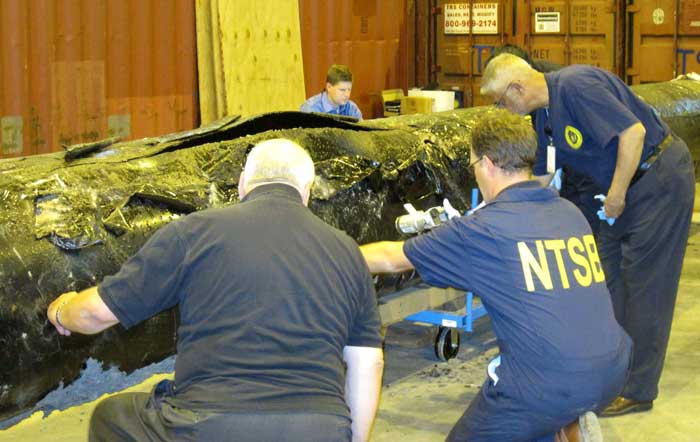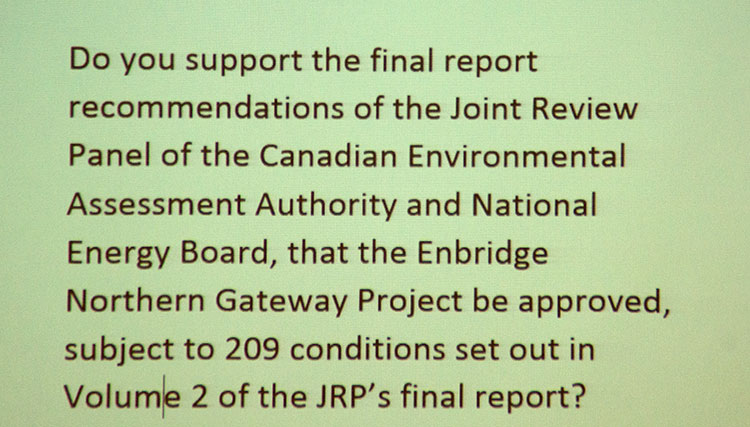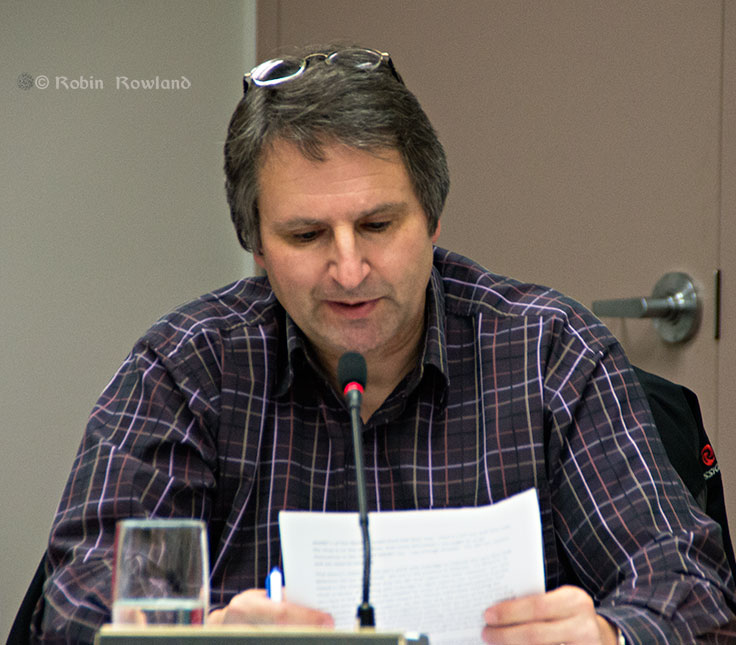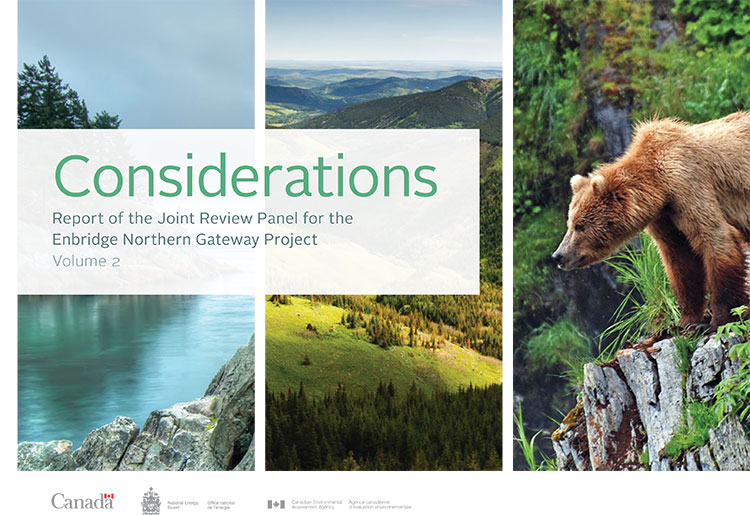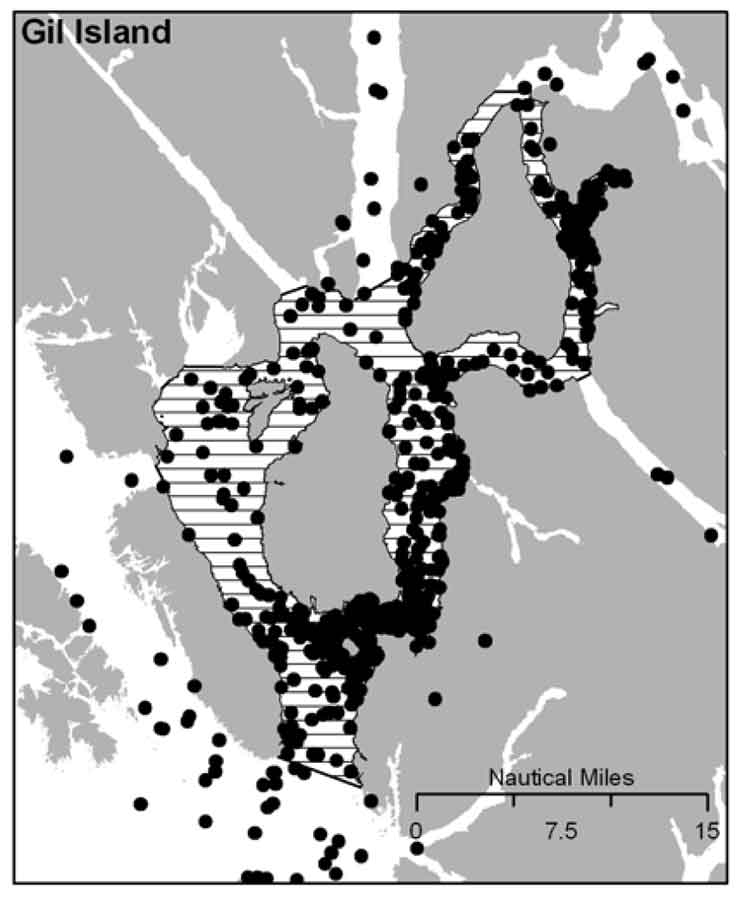Skeena Bulkley Valley MP Nathan Cullen says at least two of the Northern Gateway Joint Review Panel’s 209 conditions may already be outdated.
In a news release January 15, 2013, Cullen said, “The requirement of $950 million in spill insurance was recently called into question as reports surfaced of cleanup costs at the sites of Enbridge’s 2010 Michigan spill surpassing $1.035 billion.”
The $1.035 billion figure was contained in Enbridge’s American arm, Enbridge Energy Partners, latest filing for the third quarter over 2013 with the US Securities and Exchange Commission.
Cullen went to say that, “The JRP’s order for Enbridge to carry out new research on the behaviour of diluted in bitumen in a marine environment has been questioned following the publication of an Environment Canada study confirming that diluted bitumen will sink in saltwater in high waves and where sediment is present.”
Cullen is referring to a study by Environment Canada Emergencies Science and Technology,Fisheries and Oceans Canada Centre for Offshore Oil, Gas and Energy Research and Natural Resoures Canada on bitumen that was completed in November and released this week.
The study found
. Like conventional crude oil, both diluted bitumen products floated on saltwater (free of sediment), even after evaporation and exposure to light and mixing with water;
. When fine sediments were suspended in the saltwater, high-energy wave action mixed the sediments with the diluted bitumen, causing the mixture to sink or be dispersed as floating tarballs;
(The use of the term “tarball” in this report follows convention in the literature and refers to the consistency of floating, heavily-weathered oil. It does not describe the chemical composition of the product.)
. Under conditions simulating breaking waves, where chemical dispersants have proven effective with conventional crude oils, a commercial chemical dispersant (Corexit 9500) had quite limited effectiveness in dispersing dilbit;
. Application of fine sediments to floating diluted bitumen was not effective in helping to disperse the products;
. The two diluted bitumen products display some of the same behaviours as conventional petroleum products (i.e. fuel oils and conventional crude oils), but also significant differences, notably for the rate and extent of evaporation.
Read the report:Properties, Composition and Marine Spill Behaviour, Fate and Transport of Two Diluted Bitumen Products from the Canadian Oil Sands (pdf)
The Joint Review Panel found that dilbit was “ no more likely to sink to the bottom than other
heavier oils”
The Panel acknowledges the variety of opinions from experts regarding the behavior and fate of oil spilled in aquatic environments. These experts generally agreed that the ultimate behavior and fate of the oil would depend on a number of factors, including the volume of oil spilled, the physical and chemical characteristics of the product, and the environmental conditions at the time.
The Panel finds that likely oil behaviour and potential response options can be predicted from knowledge of the type of oil spilled and its physical and chemical characteristics. Details of oil behaviour and response options cannot be specified until the actual circumstances of a spill are known.
The Panel is of the view that, if placed along a spectrum of: tendency to submerge; persistence; and recovery difficulty, dilbit would be on the higher end of the spectrum, similar to other heavy oil products.
The Panel accepts evidence from previous spills showing that, in response to circumstances at the time, the behaviour of heavier oils, including conventional oils and synthetic crudes, can be dynamic. Some oil floats, some sinks, and some is neutrally buoyant and subject to submergence and overwashing.
Although the project would transport different types of oil, the majority of the evidence presented during the hearing process focussed on whether dilbit is likely to sink when spilled in an aquatic environment. In light of this, the Panel has chosen to focus its views on dilbit. The Panel heard that the fate and behaviour of dilbit has not been studied as much as that of other oils.
Although there is some uncertainty regarding the behavior of dilbit spilled in water, the Panel finds that the weight of evidence indicates that dilbit is no more likely to sink to the bottom than other heavier oils with similar physical and chemical properties.
The Panel finds that dilbit is unlikely to sink due to natural weathering processes alone, within the time frame in which initial, on-water response may occur, or in the absence of sediment or other particulate matter interactions. The Panel finds that a dilbit spill is not likely to sink as a continuous layer that coats the seabed or riverbed.
“It hasn’t even been a month since the JRP released their 209 conditions, and it seems like we’re already seeing some of them become obsolete,” Cullen said.
“Throughout the review process, the JRP continually ignored the situation in Michigan as it unfolded before our eyes. They saw the spill caused by Enbridge’s negligence, which was worsened by Enbridge’s incompetence, and how it brought untold damage to the local ecosystem and cost over $1 billion US. But the 209 conditions didn’t reflect what we learned about Enbridge’s history or its culture, or what we’ve learned about diluted bitumen at all.”
The Joint Review process was set up to deliver a positive verdict, according to Cullen, regardless of what the real life case studies in Michigan had already shown. “To say that it won’t cost as much – if not more – to respond to a spill in a remote corner of northwestern BC during winter than it was in Michigan in the middle of July is ridiculous,” Cullen said.
“What’s even more astonishing is that we asked repeatedly for these studies on the behaviour of diluted bitumen in the marine environment to be part of the Joint Review Panel’s assessment. That the government waited until after the JRP had given its conditional yes to release these findings is not only appalling but also highly suspect.
Cullen says there are two key questions that the Harper government now must answer. “What kind of protection is the government providing when it lowballs on the insurance for oil spills? And what kind of oversight is it giving Canadians when the verdict is given before the evidence is released?”
